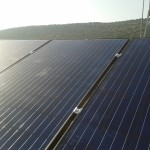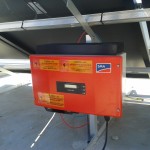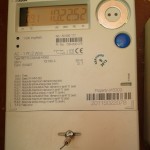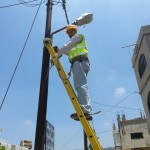| Every day, light hits your roof’s solar panels with photons (particles of sunlight). The solar panel converts those photons into electrons of direct current (“DC”) electricity. The electrons flow out of the solar panel and into an inverter and other electrical safety devices. The inverter converts that “DC” power (commonly used in batteries) into alternating current or “AC” power. AC power is the kind of electrical that your television, computer, and toasters use when plugged into the wall outlet.Solar system components work together to power your business with clean energy from the sun. Solar Panels
Solar panels are installed on your roof or adjacent structure. These panels are made up of photovoltaic (PV) cells, which convert sunlight into DC power. These cells don’t need direct sunlight to work, they can still generate some electricity on a cloudy day. Inverter
The DC power from the solar panels is sent to an inverter, where it is converted into AC power, or standard electrical current used to power your facility. Specifically, the PV inverter has features that maximize the energy available from a photovoltaic energy system. The power of a PV panel is dependent on the voltage and current of the PV panel which can vary. Electrical Panel
AC power travels from the inverter to the electrical cabinet, often called a breaker box. This power is then available to service all of your electrical needs. Utility Meter
The utility meter continually measures your electrical supply; when your solar system produces more power than you need, the meter literally spins backwards, accumulating credits with the utility company that will offset your next bill. Utility Grid
Your business remains connected to the utility grid to supply you with electricity when you need more power than your system has produced, such as at night. | 



